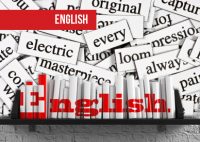Comprehension For SBI PO set – 15

Comprehension set – 15
A few weeks ago I ran into an old friend who currently one of t he mandarins deciding India’s economic and financial policies. He asked, “And so, how is IIT doing?” As one can only indulge in friendly banter at such gatherings, I responded with, “Not so well actually. Your market-friendly policies have forced us to raise the fee, so we have 50% fewer PhD applicants this year. Not batting an eyelid, he shot back: “Obviously. Your PhD students don’t have any market value.” Taken aback, I shifted to a more serious tone and tried to start a discussion on the need for research in these globalised times. But he had already walked away. The last word on the imperatives of the ‘market’ had been spoken. Actually, this view f higher education should not have surprised me. Worthies who look at everything as consumer products classify higher education as a ‘non-merit’ good. Non-merit goods are those where only the individual benefits from acquiring them and not the society as a whole. Multilateral agencies like the world Bank have too been pushing countries like India to stop subsidies to higher education. When Ron Brown, former US commerce secretary visited India, a public meeting was organized at IIT Delhi. At that meeting I asked him: “I understand that since the 19th century all the way up to the 1970s, most land grant and state universities in the US virtually provided free education to state citizens. Was that good for the economy, or should they have charged high fees in the early 20th century?” He replied, “It was great for the economy. It was one of the best things that the US government did at that particular time in American history-building institutions of higher education which were accessible to the masses of the people. I think it is one of the reasons why our economy grew and prospered, one of the ways in which the US was able to close some of its social gaps. So people who lived in rural areas would have the same kind of access to higher education as people living in other parts of the country. It was one of the reasons for making America strong.” Our policy-makers seem unaware that their mentors in the US did not follow policies at home which they now prescribe for other countries. Ron Brown’s remarks summarise the importance of policy-makers in the US place on higher education as a vehicle for upward mobility, for the poorer sectors of their population. Even today, a majority of Americans study in state-run institutions. Some of these Michigan, Illinois, Ohio, Wisconsin and Texas, are among the best in world. The annual tuition charged from state residents (about $ 5000 a year) is about a month’s salary paid to a lecturer. Even this fee is waived for most students. In addition, students receive stipends for books, food and hostel charges. The basic principle is that no student who gets admission to a university should have to depend on parental support if it is not available. Ron Brown’s remarks went unnoticed in India. Every other day some luminary or the other opines that universities and technical education institutions should increase their charges and that such education should not be subsidized. Most editorials echo these sentiments. Eminent industrialists pontificate that we should run educational institutions like business houses. Visiting experts from the Bank and the IMF, in their newly emerging concern for the poor, advise us to divert funds from higher education to primary education.
1. The author of the passage seems to be a/an
(a) official working in economic affairs department
(b) financial advisor to Government or a bureaucrat in finance department
(c) social activist devoted to illiteracy eradication programme
(d) educationist in IIT or some such educational institution
(e) industrialist employing highly qualified technocrats
2. What was the net tangible impact of raising fees on the higher level of technological research?
(a) The number of prospective researchers was reduced to almost a half.
(b) The market value of PhD students was almost lost.
(c) Research studies attained a higher market value.
(d) Research became more and more relevant to market demands.
(e) In the current globalised times, the need for research was less than ever.
3. According to the author, the US policy-makers consider education as a
(a) hindrance in the way to economic growth and prosperity
(b) means for achieving upward mobility for the poor
(c) wastage of resources and a totally futile exercise
(d) matter of concern only for the parents of the students
(e) None of these
4. Who among the following support the view that higher education should be free to everyone aspiring for it?
(A) Editors and Journalists
(B) Industrialists
(C) Visiting Experts from the Bank and the IMF
(a) A only
(b) B only
(c) C only
(d) All the three
(e) None of these
5. Which of the following makes the policy-makers classify education as “non-merit” commodity?
(a) The tendency of people to seek any individual benefit
(b) The attitude of giving unreasonably more weightage to society
(c) The tendency of viewing everything as mere consumer product
(d) Undue pressure from International Agencies like the World Bank, etc
(e) None of these
6. What was Ron Brown’s reaction to the author’s question on free education provided by US universities to their citizens? Ron Brown
(a) criticized the US govt for its action.
(b) appreciated the author buy remained non-committed.
(c) ignored the fact and gave an ambiguous reaction.
(d) mentioned that the author’s information was not correct.
(e) None of these
7. The basic principle adopted by the renowned State-run Universities in the US is that the students
(a) Must pay the lecturer’s salary from their own resources
(b) should earn while they learn and pay higher education fees
(c) must seek the necessary help from their parents on whom they depend
(d) need not be required to depend upon their parents for acquiring higher education
(e) None of these
8. What was the outcome of the US strategy of imparting free university education to US citizens?
(a) Education was easily accessible to the vast majority.
(b) US citizens found it unaffordable and expensive.
(c) US economy suffered due to such a lop-sided decision.
(d) US Govt could not plug the loopholes in their economic policies.
(e) None of these
9. Multilateral agencies like The World Bank have been
(a) pressurizing India and other countries to stop substantial higher education
(b) insisting on discontinuance of subsidies to higher education
(c) analyzing the possibilities of increasing subsidies to higher learning
(d) emphasizing on the needs of lowering fees for higher education
(e) forcing countries like India to strengthen only industrial development
Directions (Q. 10-12): Which of the following is MOST NEARLY THE SAME in meaning as the word printed in bold as used in the passage?
10. UNAWARE
(a) Famous
(b) Ignorant
(c) Familiar
(d) Unworthy
(e) Negligent
11. WAIVED
(a) Moved
(b) Charged
(c) Condoned
(d) Overlooked
(e) Paid
12. MASSES
(a) Institutions
(b) Groups
(c) Students
(d) Officers
(e) Parents
Directions (Q. 13-15): Which of the following is MOST OPPOSITE in meaning of the word printed in bold as used in the passage?
13. GLOBALISED
(a) Universalised
(b) Liberalised
(c) Earthly
(d) Prospering
(e) Decentralised
14. PROSPERED
(a) Declined
(b) Progressed
(c) Improved
(d) Decomposed
(e) Englightened
15. CONCERN
(a) Worry
(b) Anxiety
(c) Sympathy
(d) Indifference
(e) Nullification
Answer key:
1. (d) 2. (a) 3. (b) 4. (e) 5. (c) 6. (b) 7. (d) 8. (e) 9. (b) 10. (b) 11. (d) 12. (b) 13. (e) 14. (a) 15. (d)



